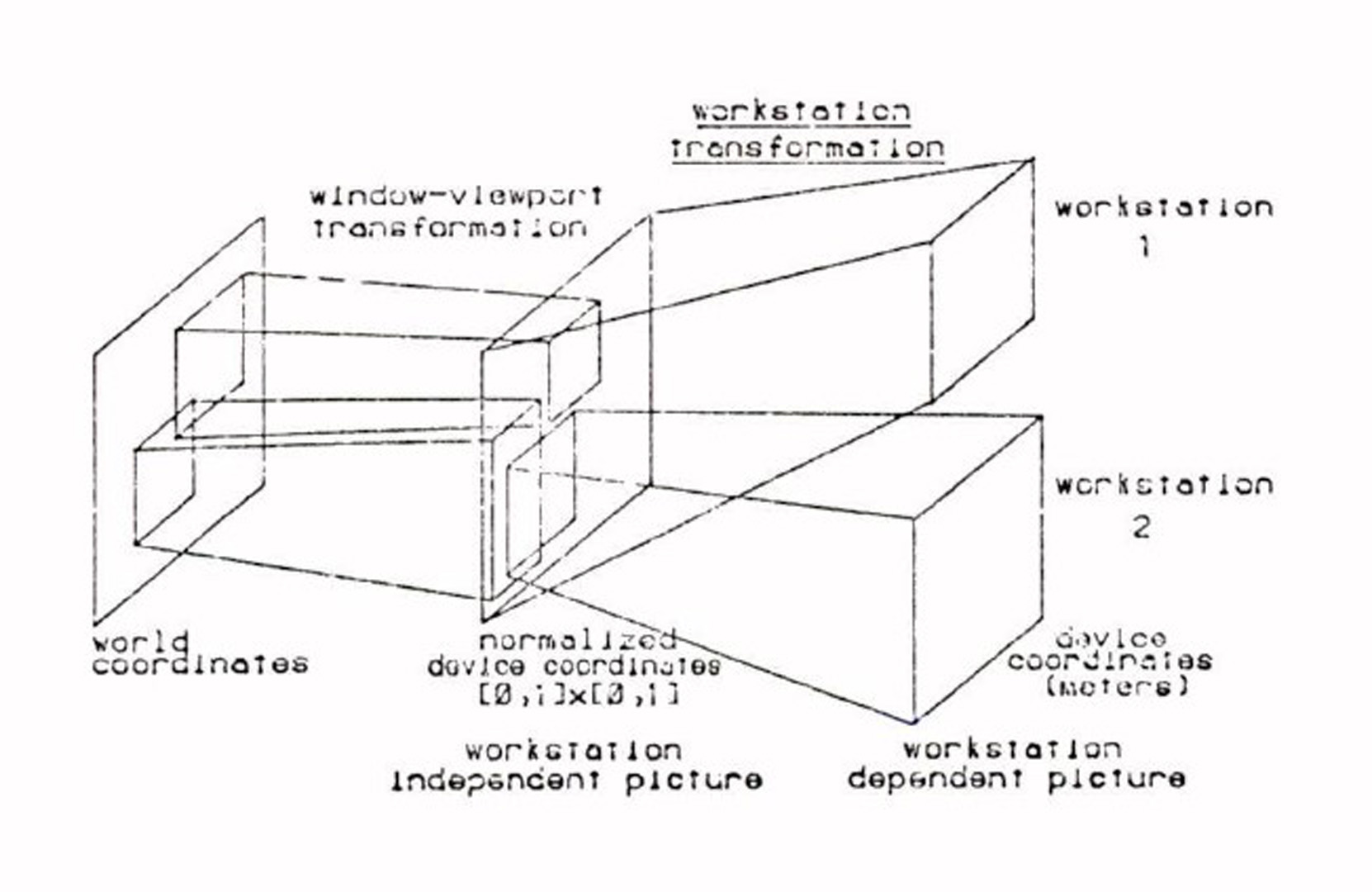“The workstation concept of GKS and the resulting conceptual differences to the GSPC core system” by Encarnação, Enderle, Kansy, Nees, Schlechtendahl, et al. …
Conference:
Type(s):
Title:
- The workstation concept of GKS and the resulting conceptual differences to the GSPC core system
Presenter(s)/Author(s):
Abstract:
GKS has evolved from a long process of national /1,2,3,4/ and international /5,6/ discussion on standardization of graphical systems. One of the basic principles of the Graphical Kernel System GKS is the concept of workstations that are used to address a display terminal with several input devices. This is a basic conceptual difference to the GSPC core system /6/, which will be discussed in this paper. A workstation represents a collection of graphical devices that are operated in a coordinated fashion by an operator at a given site. The whole workstation is treated in GKS as one logical unit. GKS features two dimensional output to and input from single or multiple workstations. Besides basic line drawing primitives raster graphics primitives are supported. The coordinates are transformed in a two-stage transformation process where the first stage can be set for each primitive and the second can be set for each workstation. Furthermore the setting of a workstation specific pen and text table allows control of the appearance of all primitives on the corresponding workstation. A segment facility provides means for structuring a picture in subparts. Segments may be created and deleted, the segment attributes may be dynamically modified, and the segments may be transformed. They can be displayed simultaneously or alternatively on different workstations. A device independent segment storage serves for inserting segments into other segments.
References:
1. J. Encarnacao, B. Fink, E. Hörbst, R. Konkart, G. Nees, D.L. Parnas, E.G. Schlechtendahl A recommendation on Methodology in Computer Graphics; A position paper for the IFIP-Graphics Workshop, Seillac, France, 1976 (Seillac I), published as report KfK 2394, 1977, Karlsruhe
2. R. Eckert, F.J. Prester, E.G. Schlechtendahl and P. Wi{?}kirchen; Functional description of the Graphical Core System GKS as a step towards standardization; Informatik-Fachberichte 11, Springer 1977, pp. 163
3. R. Eckert, G. Enderle, K. Kansy and F.J. Prester; GKS’79 – Proposal of a Standard for a Graphical Kernel System; Proceedings of Eurographics’79, Bologna, October 1979, pp. 2
4. Proposal of Standard DIN 0066252; Information Processing – Graphical Kernel System (GKS); Functional description, NI-5.9/26-79, Version 5.2; 5.11.1979
5. R.A. Guedj and H.A. Tucker (editors) Methodology in Computer Graphics (Seillac I) North-Holland, 1979
6. J. Weiss; Device driver interfaces for decentral device drivers; Proceedings of Eurographics’79, Bologna, October 1979, pp. 252
7. “Status Report of the Graphic Standards Planning Committee”; Computer Graphics, Vol. 13, No. 3, August 1979




